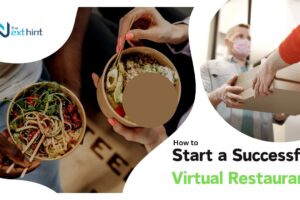Gone are the days when straightaway selling products or services to customers was a piece of cake. Today, the customers are more informed than ever and can very much educate themselves even before they make a decision to go with you. With the advancement of technology and the advent of eCommerce, the world witnessed a paradigm shift in purchasing behavior of patrons.
Further, the pandemic has made companies go beyond traditional customer engagements and interact with them in a simple, innovative, and more tailored manner. Therefore, whether you close a deal or miss out on an opportunity depends significantly on how you’ve center staged customer engagement at the epicenter of your sales and marketing operations.
Before we delve deeper into the customer journey, let’s have a quick glimpse of the process and see how all stages of consumption: pre-purchase, consumption, and post-consumption are connected.
Decoding Customer Journey:
Going by the book, the customer journey is a decision-making process that we all undergo. Although the end goal is the same, that is making a purchase! But, how we arrive at that differs for everybody. Today, in the option-driven market consumers expect much more than an ordinary purchase experience.
According to a report by SproutSocial, over 64% of patrons desire brands to bridge the gap and connect with them first. No wonder brands of all scales are turning to social media and started building innovative customer interaction touch-points through product reveals, social listening, artificial intelligence, QnA, customer service, and more.
Let’s move ahead and talk about five critical stages of the customer journey and how companies can leverage them to commit better to their clients.
- Establishing the Connect:
As the name suggests, the primary stage of a customer journey is connection. Also, known as the ‘awareness’ stage, this is where potential consumers start when they have a problem, or need a service or product to get the work done. At this point, prospects turn to advertisements, word-of-mouth, and social media for clues. One should note that during this stage your customers know nothing about you or your brand.
Now, this is where your sales and marketing teams pitch in, establish your presence in the niche, make a pitch to patrons, or list product benefits. The goal is to show the prospects how you can help them and why they should go with you. Managers can leverage a dedicated customer roadmap template, capture all the user information and move on to the next step where you focus only on patrons possessing high buyer intent.
- Discovering Buyer’s Intent and Cultivation:
The next step is to gauge the buyer’s intent and understand how invested a patron is in purchasing your services or products. A customer has shown a high degree of intention to buy from you, but still, it doesn’t mean they will! Perhaps, they merely want to check it out and not make any decision? Under this step, brands can segregate customers based on their degree of intent and entice each segment differently.
For instance, if a patron has decided on the product but isn’t sure about the variant, brands can educate them by providing information on all the available versions and what sets them apart. On the other end of the spectrum, people with low or moderate buyer intent take customized, deeper convincing and can be comforted if you prove to them how you are unique, whether your services and products outweigh the price, etc.
- Building Consideration with Customer:
The consideration stage is where people are evaluating & finalizing their options. Entrepreneurs and business managers must note that consideration is a critical stage of a customer journey because they are actually serious about buying your service or product. However, they can still buy from your competition or not buy at all right? Well, that’s because they aren’t sure whether your service or product can 100% match their requirement.
Therefore, brands can consider reiterating information provided during the initial stages and provide supplementary proof, such that they know your offer is exactly what they need! The customer in the consideration stage is seeking the right signals from the brand. If done right, they can comprehend your business is the most qualified to get the work done for them.
- Conversion or After-Sale:
Now that prospects have converted, given you their business, and finally become customers, it’s time for brands to deliver on their promises made during earlier stages. There is no denying that almost every organization has an after-sales process. However, how well it is managed and run can go a long way for your brand.
After-sales services such as gift hampers, discounts on future purchases, extended warranty, and upgrades engage the customer during the last stages of their journey. Inconsistent or poor service during this stage can destroy your company’s credibility and ruin the customer’s journey at the same time. Hence, ensure a smooth post-purchase customer experience and foster happy advocates for your brand.
- Seamless Continuation:
Continuation is where your customer is coming back to you with business time and again as brand advocates as they think you’re great. Now, delivering a superior experience once for a brand isn’t difficult, however maintaining the same standards is the key to success.
Although reselling to existing customers is easier than selling to a new one. But if brands don’t keep in touch with the customers or pay continuous attention to their changing expectations, needs, or purchasing habits, they can lose a loyal patron.
The End Line:
Business leaders or entrepreneurs must understand that with the changing time, the customer demands and needs also change. Understanding and capturing the customer journey is a great way to stay on top of changing markets and make relevant business adjustments.














Add Comment